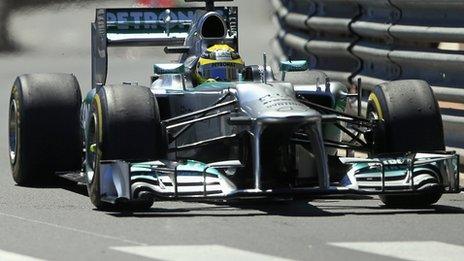Formula 1: The magic of the Monaco Grand Prix
- Published
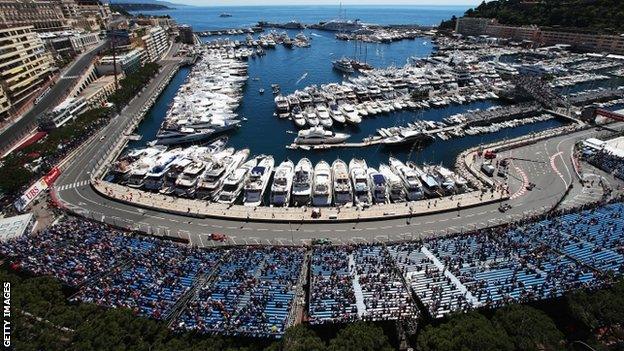
They call it the jewel in the crown of Formula 1, they say it's the one every driver wants to win, they believe it's one even the rich and famous are afraid to miss...
Ahead of this weekend's 60th running of the Monaco Grand Prix, BBC Sport takes a look at the playground of the Europe's glitterati where the world's most intoxicating motor race rolls up at the end of May each year.
Inside Monaco
Nestled on the coast of the French Riviera, close to the border of Italy, lies the principality of Monaco, the world's second smallest country behind Vatican City. Spread over just 1.9 square kilometres, it homes some of the world's richest people who are keen to squirrel away their fortunes in the tax haven as well as have somewhere suitable to moor their luxury yachts.
Rammed full of casinos, boutique shops and high-rise apartments, Monaco oozes wealth. That explains why despite its tight and twisty streets where a Smart car or Ford Ka would be at home, a vast array of supercars remain the main transport method of choice. The sovereign city-state has also got its own heliport, with flights from Nice airport costing a mere 105 euros (£90) for the seven-minute journey.
Monaco's rulers, the Grimaldi family, purchased the small strip of land from the Kingdom of Aragon in 1419 and four hundred years later, they abolished income tax on the back of gambling revenues - and for the majority of Monaco's residents it remains.
It makes sense, then, for the absurdly wealthy to take up residence in Monte Carlo. Lewis Hamilton, Paul Di Resta, Nico Rosberg and Jenson Button are just some of the F1 racing drivers who have set up home there.
It's just as well they've got big pay packets because according to a recent report by estate agent Knight Frank,, external every 25 metres square of luxury real estate - the size of a small studio apartment - is worth a million pounds.
As a result, only a fifth of Monaco's population are native Monegasques, with the majority wealthy foreigners known as Monacoian. Unsurprisingly, the city-state has the highest GDP per person in the world at - $215,163 (£142,322).
For 51 weeks a year, Monaco remains a sleepy Mediterranean idyll where residents can enjoy a drink on a terrace overlooking the harbour as the yachts gently bob up and down under cobalt blue skies, the world seemingly passing them by. But for four days in May, everything changes - as Formula 1 comes to town.
From principality to race track
The Monaco Grand Prix may only run over four days, but preparations begins in March with nearly 200 construction workers working flat out to build 1,100 tonnes of temporary grandstands which can hold 37,000.
The actual attendance figure is closer to 200,000, though, as onlookers watch from balconies, rooftops and even the hill-slope below Prince Albert's palace. And if your name is Will Smith or Jason Statham, you might even get to watch the race from the paddock or pit lane.
The residents have to cope with disruption as workers close roads to fit 33km of Armco barriers while the telephone lines went down for a morning last month as they switched from 3G to 4G in time for the race weekend. However, having hosted the race first in 1950 and then every year since 1955 on a largely unchanged layout through the streets of the principality, the organisers have had plenty of practice in holding the event.
But the impact is arguably worth the hassle as thousands descend on the principality for race weekend with their bulging wallets, determined to enjoy the Monaco experience.
That financial income as a result of the race continues for the rest of the year too, with tourists heading to Monaco to snap the famous track while a number of organisations choose to hold congresses and launches to trade off Monte Carlo's status.
The plethora of casinos helps get the high-rollers in, while the pleasant climate - it's never scorching, but you'll never need a winter coat either - makes the city-state an attractive proposition for anyone who can afford it.
Race weekend
On the Thursday of race weekend, the streets go into lockdown, with 3.340km of street-circuit reserved for 22 2.4-litre V8 engine-powered Formula 1 cars to tear out of the pit lane - which is the only permanent part of the track. It's the only Formula 1 race to hold practice on a Thursday, as the streets are reopened on Friday to ease disruption at the end of the working week.
Once the formalities are done and dusted, it's party time in the harbour. This year, Force India owner Vijay Mallya held an invite-only gathering on his luxury yacht, while across the water, Red Bull's giant floating motorhome - complete with swimming pool and resident DJ - was rocking until the early hours of the morning. It's just as well there's no track action on Friday.
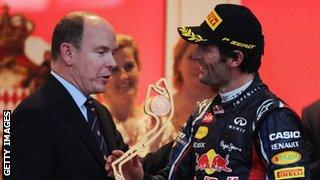
Mark Webber receiving the trophy from Prince Albert II after winning in the Monaco GP in 2012
The most expensive seats trackside are £1,400 on race day, with admission onto a rough hill overlooking a big screen coming in at £30 - but some of the best views are from hotel balconies, such as the Fairmont hotel which sits on the famous hairpin and is where Star Wars creator George Lucas is a race weekend regular.
It's not cheap, though, with a suite overlooking the track costing £24,000 for four nights - the minimum number of nights you can book on race weekend.
If you fancy viewing the race from a boat, you need to get your application in before March when a committee will decide who gets one. The cheapest option is a 6,400 euro (£5,485) berth, but that's the furthest out in the way.
For those who want to be closer, you'll need to folk out 101,000 euros (£86,543). That'll give you access to the berth from Monday before the race and you must be in position before Wednesday night.
You then can't leave until Sunday night after the race, once the top three drivers have hopped up the red velvet steps to the royal box to receive their trophies from Prince Albert.
But then, following an experience like that, why would you want to leave at all?
- Published22 May 2013
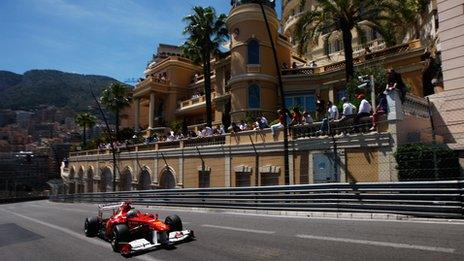
- Published21 May 2013
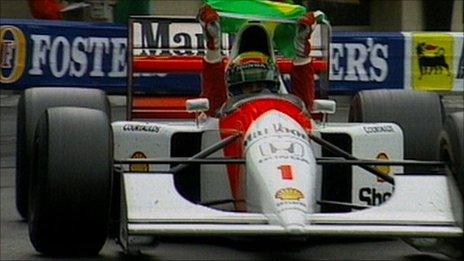
- Published23 May 2013
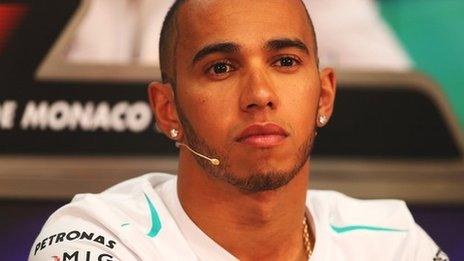
- Published23 May 2013
